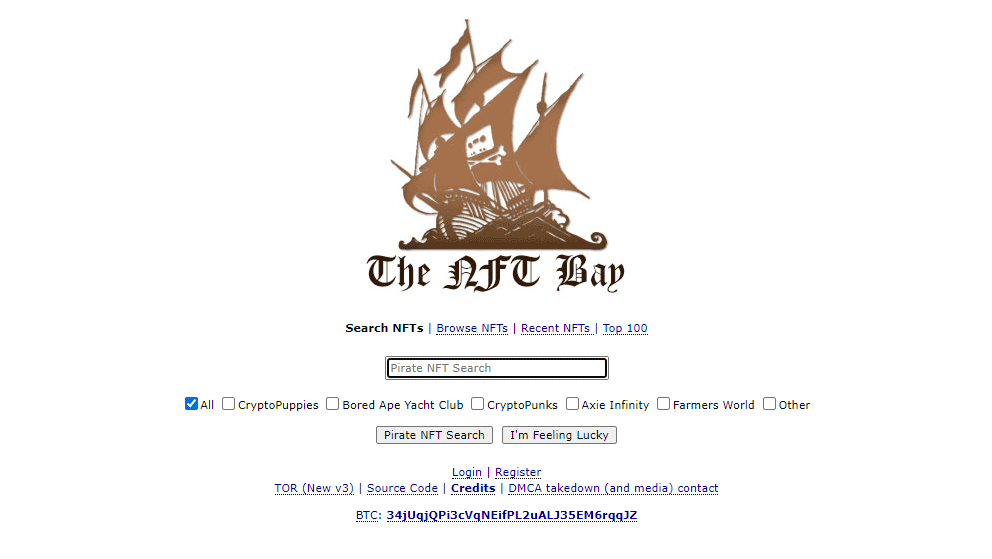
Australian software engineer Geoffrey Huntley launched a website called The NFT Bay for the purpose of hosting 19.5 terabytes of nonfungible token artwork and providing a useful lesson on blockchain technology as well.
The NFT Bay’s name and website design both mimic that of The Pirate Bay, a torrent website where people can pirate software, music and movies. The objective of the website, Huntley said in a statement Thursday, is an “educational art project” designed to let people know what they’re buying into when they get an NFT.
NFTs are a type of crypto asset that use blockchain technology to represent the ownership of a digital item such as artwork, video or in-game item. An NFT owner can prove that they ‘own’ the digital item because they have the cryptographic token associated with the artwork and the keys to exchange that token are stored in a wallet.
However, as Huntley pointed out in statements to the press, NFTs don’t often actually store any media on the blockchain at all. Just the provenance for ownership of the digital item.
“Fundamentally, I hope…people learn to understand what people are buying when purchasing NFT art right now is nothing more [than] directions on how to access or download [an] image,” said Huntley. “The image is not stored on the blockchain and the majority of images I’ve seen are hosted on web2.0 storage which is likely to end up as 404 meaning the NFT has even less value.”
In spite of all this, the NFT market has grown considerably in the past year driven primarily by the popularity of collectibles, artwork and gaming items. During the third quarter of 2021 alone the global market hit $10.7 billion in sales volume.
Some of the most recognizable NFTs available on The NFT Bay include the procedurally generated CryptoPunks, Bored Apes Yacht Club and game items from Axie Infinity.
To give an idea of where collectible NFTs can range, CryptoPunk #7523 sold for $11.8 million in June and Bored Ape Yacht Club #8817 sold for $3.4 million in October. These values are for rare variants from these collections and don’t represent the majority of sales, but they certainly drive interest in the market when news comes out in a similar way to other fads.
Another problem is that anyone can “mint” an NFT and sell it without regard to the underlying artwork. For example, a hacker successfully faked a piece of art by Banksy and sold it through the artist’s website as an NFT (although the hacker returned the funds after the hoax).
Controversies continue to rise about NFTs and the issues surrounding the market. Such as when Jason Citron, founder and chief executive of gaming-focused group chat platform Discord, tweeted about integrating an NFT and crypto wallet was met with instant backlash from the community.
Valve Corp. booted blockchain-based games from its digital game distribution platform Steam in October. Although Epic Games Inc. responded that such games would be permitted on the Epic Games Store.
In recent weeks other gaming industry titans have listed interest in NFTs and blockchain technology for what is called play-to-earn — where players can earn NFTs by playing the game, which in turn can be traded for cryptocurrency or dollars — including Electronic Arts Inc., Ubisoft Entertainment SA, NCSoft Corp., and legendary social game developer Zynga Inc.
Image: Geoffrey Huntley
